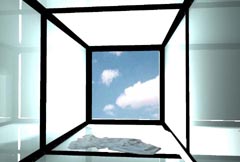 This is a freedom. It allows you to free your self from objects. Free your self from architecture. Free your self. This is the perfect place to listen to music, to eat Chinese food, to throw your clothes on the floor, to sit and look out at the sky. The viewer’s life activities are enhanced by an awareness of the present, and of themselves, non-void within the void.
This is a freedom. It allows you to free your self from objects. Free your self from architecture. Free your self. This is the perfect place to listen to music, to eat Chinese food, to throw your clothes on the floor, to sit and look out at the sky. The viewer’s life activities are enhanced by an awareness of the present, and of themselves, non-void within the void.
Archive: Author: wade tillett
1
A
Physical representations can not change fluidly because they are objects. A fluid effect allows us to produce something that can change rapidly before inevitable obsolescence. Architecture is obsolete before it is built. As our society speeds information, fads, styles, trends, the object must abandon style and embrace a fluid effect. We will become more willing to pay for information and entertainment without objects (the information of a book without the physical object book). We are no longer interested in the object, but rather the effects we can gain from the objects. No one wants a stereo, or a VCR, or a vehicle. What we want is music, movies, destinations.
“No more fantasies of power, speed and appropriation linked to the object itself, but instead a tactic of potentialities linked to usage: mastery, control and command, an optimization of the play of possibilities offered by the car as vector and vehicle, and no longer as object?. The vehicle now becomes a kind of capsule, its dashboard the brain, the surrounding landscape unfolding like a televised screen?.”38
Architecture is the objectification of the components necessary for the effect. Architecture gratifies. This is why objects are created. Architecture is no longer capable of gratifying our desire to see ourselves. Architecture is too static, too clumsy, too limited to provide a thought or a language which is relevant to our modern life of continual change, of perpetual evolution, of information, recursive design systems, genetic design, self-regulation, and self-creation. We are evolving to evolution. We produce a system within itself. We create images that change as we change. We create Images of ourselves do not clutter the physical world. They are allowed to exist within the realm of communication, of language, where they can change as we change. We create images in cyber-space because this is the space of language. Language changes. Language is irrevocably linked to the reader, to thought, to the mind. Language is not independent of the mind.
Minimal design allows us to support language without imbedding language. Minimal design allows for effect without the objectification of images of ourselves. Minimal design allows an efficiency of effect, of experience. We can eliminate the objects that supported the effect and have only the effect.
Television, cable, movies, alarm clock, phone, teleconferencing, lights, speakers, computer networks, the internet, voice mail, checkout, room service, directions, suggestions, reservations, the physical objects which are associated with the function that they provide can be integrated and controlled by a computer system, by binary, by language.
As technology continues to infringe on our everyday lives, we must decide whether it is to play a subservient role to life, or whether it is allowed to force itself on us. This design attempts to provide a balance and an either/or. “Being and function are mutually exclusive.”39 Voice technology is expected to take be a $3.5 billion industry by 2001. Do we really want to talk to computers? More importantly, do we want computers to talk to us? The ATM currently reads “I cannot process your request.” The program I am writing this on has an animated staple, my assistant, who gives me advice. The strength of this proposal lies in technology fulfilling needs in the background, working so that we are not forced into thought while we are in the state of direct perception.
Architecture is built to gratify. Architecture must be a system that supports effect. The effect must be total and all encompassing. And this effect must be personalized. We no longer want an image of ourselves, instead we want an image of ourself. “The triumph of consumer society is a triumph of all private goals over all public goals.”40
6
4
5
3
2
1
0
zero|one lets you enhance your life simply by living it.
Every time you use a zero|one service it contributes to the individualization of your personal zero|one profile. Whether you’re using you free locator to find the nearest terminal or spending a week in the Chicago hotel, you are continually personalizing your profile. And best of all, there is no manual input from you. The zero|one profiler simply gleans data off your daily actions, runs them through the program, and feeds them back to your profile to provide you a continuous stream of improvement as you are using our service.
Your profile allows zero|one to automatically give you the things you want just as you were realizing you wanted them. Zero|one can sense anything from when you would liketo be a little bit warmer to what movies to put on, whether you are in your room, car, or home (if you have the zero|one car and home plug-ins). The higher the service level, the more personalized your profile becomes. The locator combines with your profile to allow zero|one to make informed decisions about how to adjust your environment. It knows where you are and what you like as well as the best way to get you there.
The degree of automation is up to you. Zero|one can automatically have your dinner delivered to your room when it senses you are getting hungry or it will give you suggestions of places to eat, or even a general direction to walk. Zero|one quickly recognizes the level of automation, as well as the level of personalization, which you enjoy for each of your activities, moods, and company.
B
We no longer populate stationariness, we inhabit the space in between; we occupy the difference:9
the difference between one design and the next,10
the difference between Comiskey Park and Taylor homes,
the difference between Chicago and Gary,
the difference between the promises of American society and their manifestation,
the difference between the pledge of the modern project11 and its production,
the difference between the fruits of capitalism, between the parcels of privatization, between houses, between private lives, between personalized utopias, between fences and gates;
the difference between supply and demand, between power?s production and its transformation,
the difference between satisfactions, between gratifications, between destinations,
the difference between our thoughts and the objectification of our thoughts,
the difference between design and the objectification of design,
the difference between the object and our thoughts about it.
In fact, it is through their difference from our thoughts about them that real things distinguish themselves from the contents of our minds.12 It is the difference that allows us to determine reality
















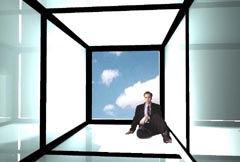 It is life which contrasts with a minimal design. The person becomes the difference, the failure, the reality within the design.
It is life which contrasts with a minimal design. The person becomes the difference, the failure, the reality within the design. 








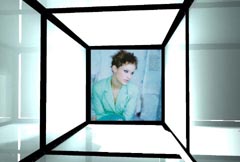 Teleconference, speak to the virtual front desk, shop, order in.
Teleconference, speak to the virtual front desk, shop, order in. 

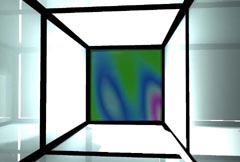 Create your own absract flow patterns. You make the rules and they make themselves. Adjusting color, speed and pattern dependent on your profile.
Create your own absract flow patterns. You make the rules and they make themselves. Adjusting color, speed and pattern dependent on your profile. 
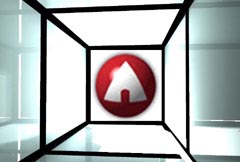 Spatial perception may be adjusted through the use of the video, lighting, sound and thermal controls.
Spatial perception may be adjusted through the use of the video, lighting, sound and thermal controls. 
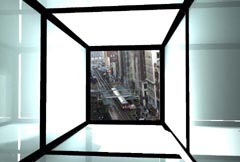 View any city in real-time from your window wherever you are.
View any city in real-time from your window wherever you are. 
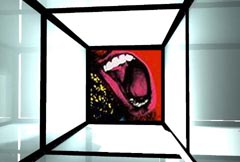 Watch a movie, make a movie, browse the internet, work. Fast data access and powerful processors with rentable programs to do what you want when you want.
Watch a movie, make a movie, browse the internet, work. Fast data access and powerful processors with rentable programs to do what you want when you want. 
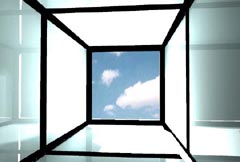 LCD technology allows for varying degrees of translucency for viewing out the window / display screen.
LCD technology allows for varying degrees of translucency for viewing out the window / display screen. 







